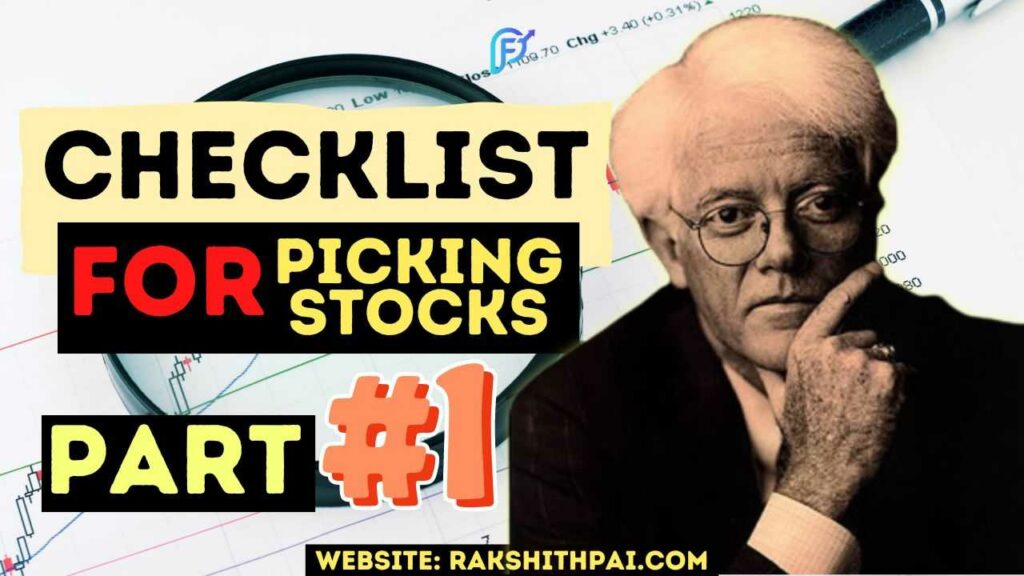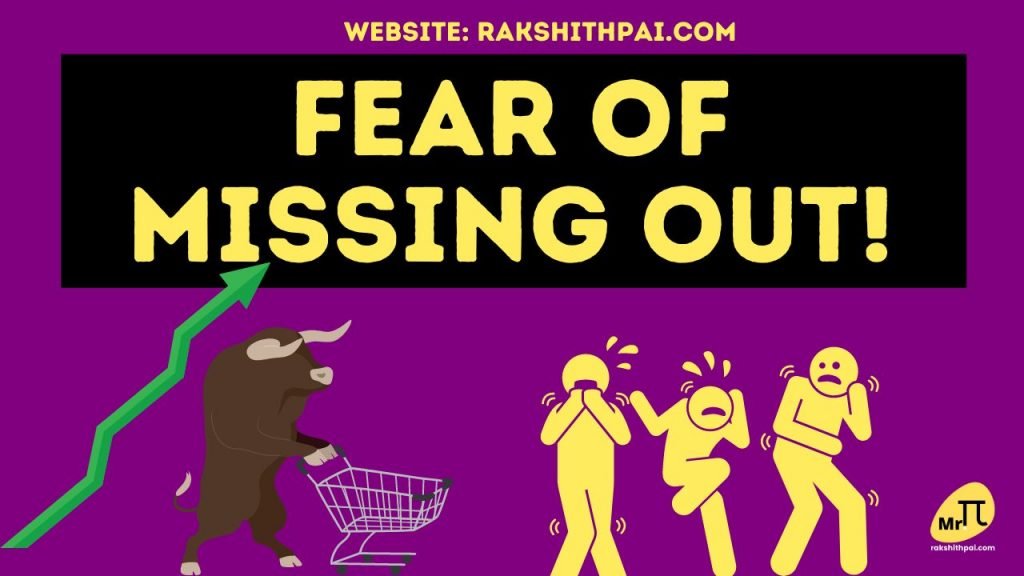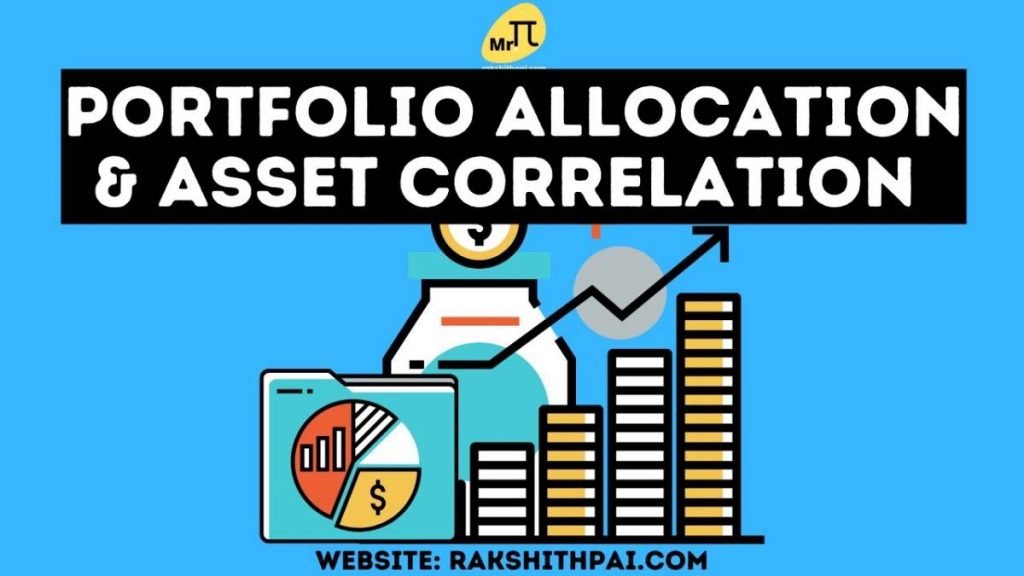Table of Contents
Sir Peter Lynch’s way of Investing;
Everybody in the investment community knows who Mr. Peter Lynch is. He is probably one individual who has made tremendous efforts in educating investors to do the investing in the right manner.
His views on investing are very widely known and quite popular. You can find most of his works in these two books.
- One Up on Wall Street
- Beating the Streets
If you are new to investing, this is a must-read book.
So, in this article, I’ll make a list of 12 such criteria that, according to Mr. Peter Lynch, must be considered before selecting a stock.
So, let’s get started.
Five (5) Major Aspects About Investing;
Valuation
Warren Buffett once said, “Buy low, sell high.” The buying-low part comes when you know what the low is. In order to find the low, in the sense, the price is the intrinsic value or the actual value of the company’s stock. Only when you know this will you ever realize whether you’ve bought low or not. Hence, we do valuation.
When doing valuation, there are three (3) prominent methods.
Value Investing – The charm of investing:
Intrinsic Valuation
Here we value the company based on its fundamentals, which are nothing but the balance sheet, the cash flow, the earnings growth, and the risk attached to it. We then compare these figures with standard metrics. For example, the ideal debt-to-equity ratio is less than 2. Now, if you check the debt-to-equity ratio of Supreme Industries Ltd., it is around 0.08, which is quite low. Right?
This way, there are a number of financial aspects, or ratios, to consider to arrive at the decision.
But be sure to know that not all ratios apply to every company. For example, the investor turnover ratio tells us the rate at which a company’s inventory is sold, used, or replaced in a year. In the case of Supreme Industries, the inventory turnover for FY 2022 is 5.3. Anything in between 5 and 10 is considered good.
But, in the case of the IT industries or the BFSI industries, i.e., the banking, financial services, and insurance industries, there’s no need for an inventory turnover ratio. Right?
So, understand the business, and only then can you make use of the financial metrics in order to arrive at the intrinsic valuation.
The intrinsic valuation methodologies include discounted cash flow as well.
Relative valuation
This is the process of valuing a company based on its assets and liabilities and comparing it to its competitors to determine what valuation our company quotes in comparison to its peers.
I’ve written a detailed article explaining relative valuation. Check the article, CLICK HERE!
Relative Valuation Model – Features, Types, Pros & Cons explained:
Option Pricing Model in Valuation
In the context of valuing the assets that have contingent cash flow.
For now, that’s all there is to say about valuation. Let’s get on with the main topic.
Institutional Ownership
When we talk about the institutions, there are the mutual fund houses, the pension funds, the insurance companies, the investment firms, the private foundations, the endowment funds (like an investment portfolio, which is funded via donations), and then there are these large entities that manage funds on behalf of others.
What Mr. Peter Lynch says is that in order to make huge returns in the market, you must invest in those companies before the institutional investors come in.
You get the point, right?
See, once institutional investors invest, it’s known to everybody. But, in order to make wealth-type money, you must get in before they do.
The best way to do it is by investing in small and midcap companies that are performing well and have not had many FIIs invest in them. Check out my article on small-cap companies. These are the companies in which I’ve invested for the long term; you can check my portfolio using the link, CLICK HERE!
Whether insiders are buying?
There is an unspoken secret. It’s that the management will always know something that you don’t. So, usually, when the management is investing in their own company, “management” in this context refers to the promoters and key managerial figures who are investing in their own company by purchasing stocks on the open market. It is a definite good sign. So it’s worth looking at.
For information regarding the promoter buying shares, you can just access it via the NSE website.
To check for insider trading, go to the NSE website, click on “LIST,” then “Corporate Filings,” and then “Insider Trading.” To check for stock buybacks, click on the “Daily Buy Back or Redemption” link.
What is earnings growth? Are earnings volatile?
The stock price is a reactive indicator. which means the stock price of a company reacts to various internal factors such as management, debtors, creditors, etc., and external factors such as the industry, the economy, governance, etc.
Above all, the most prominent aspect that guides the stock price is its earnings.
If a company earns, investors yearn. which means, over the long term, only if the company earns investors’ yearn. In the sense that they get interested in the company.
As simple as that.
So, Mr. Peter Lynch stresses the importance of a company’s ability to earn, consistent earnings, and growth in earnings.
You can find the earnings details about a company in any basic stock screener. See that the company’s top line, i.e., the revenue, and the bottom line, that is, the net profit, are rising, and see to it that the EPS, that is, the earnings per share, are also rising. The growth rate must be in line with the industry average or above it.
Company Financials
When we say financials, it includes the balance sheet, the P&L, and the cash flow.
Every company has a story behind it. It’s the financial report that spells out the story. So, basically, to read and understand the business and the story behind it, you must read annual reports. Yes, I’m saying reports as in plural because reading a 1-year report gives an analysis of the company and its industry for that year. For example, many companies showed bad earnings during the COVID pandemic. If you were to read just the 2020 report, you’d highly underestimate the company. Hence, we must read the pre-covid, the covid reports, and the post-covid earnings.
Four (4) phases of the business life cycle;
Understanding the different business phases is important before we get into the categories of stocks.
So, here are the four stages of business.
(1) Start-Up Phase
Start-up is a new bud. It begins with an idea that later grows into a full-fledged business. Start-ups have a high mortality rate. So, in general, 90 to 95% of startups fail within the first 3–5 years of operation.
For example; companies such as “Zerodha” and “Zoho” were the startups that became successful. I even consider my venture, that is to say, my website, YouTube, and such, to be my startup.
(2) Growth Phase
When a company gets past its startup difficulties, it gets stronger and starts to lead its industry. Such companies enter the growth phase. Here, we see the companies to have aggressive growth in revenue and market share.
(3) Mature Phase
Here, the company has command over its market. They have consistent cash flow, a strong customer base, and a dependable business model.
(4) Decline Phase
Those companies that can’t keep up with market demand will start losing out. So comes the decline phase. Here the company will lose to its competitors and, in due time, will die a slow death.
So, now you know the 4 phases of a company.
The next major concept is about the 6 different categories of stocks. All companies, whether publicly traded, unlisted, or privately held, can be classified into one of these six categories.
So, learning them will help you understand where the business will head in the future.
Six (6) different categories of companies;
(1) Slow Growers
Slow growers are those large-cap blue-chip companies that have matured enough to cater to their entire market. These companies were once the fast growers and were the torchbearers in the industry. They were once the most favorite hot stock. But now that they’ve grown to this enormous size with no room for expansion, they’re slowing down.
Stocks with a low growth rate are those whose profits and revenues are increasing at a slower rate. A CAGR of 2%–5% is typical, which is below average for this sector. Its large and generous payout is a telltale sign that these slowpokes may have been rapid expanders in their early years, but they have since plateaued.
Although Peter Lynch’s portfolio included several slow-growing companies, the proportion of these “sluggards” was extremely low because of his distaste for focusing on them. Peter Lynch claims that investors have nothing to gain from purchasing these stocks other than dividends. These companies usually have a respectable yield (2% to 4%) and are valuable during a recession since their price is unlikely to drop dramatically.
In order to identify a slow grower, ask these questions:
- Is it a large-cap blue-chip company?
- Is the company’s revenue growth below the industry average?
- Is the growth in single digits not because of inefficiency but because of a saturated market?
- Is the company’s product a household name?
- Do most mutual funds and other large institutions prefer to own them?
- Does this company pay out dividends, and if so, is the dividend payout consistent and growing over time?
- Is the company valued at a high PE multiple?
If the answer to all or any of these questions is “yes,” then you may be looking at a slow grower.
(2) Stalwarts
Stalwarts mean loyal or someone who is reliable and hard working. In this case, a stalwart is a company that has experienced strong growth, such as double digits, and is the type of company that continues to grow and will become a slow grower in the future.
So, any mid- and large-cap companies that have high growth amongst their peers, something that’s above the industry average and definitely above the country’s GDP growth rate, can be put into this category.
Peter Lynch classifies stocks into six (6) different groups, the second of which is “stalwarts.” These stocks are often held by medium- to large-sized businesses and have a growth rate similar to the industry average. They outperform the laggards in terms of profit growth, often posting a compound annual growth rate (CAGR) of 8 to 12 percent.
According to Mr. Peter Lynch, long-term stockholders may expect a satisfactory rate of return from these securities. Most of the time, they end up being “multiple baggers,” or investments that give you back more than your initial investment. Peter Lynch suggested including a few reliable stalwarts in your portfolio.
How to Value Stocks Using Absolute PE Model
In order to identify a stalwart, ask these questions:
- Is the company one of the top players in the industry?
- Is the top-line growth rate in double digits?
- Is the company the fast grower in its industry?
- Can the company cater to the market if there are no other competitors?
- Is the growth in earnings increasing steadily over a 5- to 10-year period?
- Does this company pay out dividends, and if so, is the dividend payout consistent and growing over time?
If the answer to all or any of these questions is “yes,” then you may be looking at a stalwart.
(3) Cyclicals
Cyclical businesses are those that have cyclical product demand. You might have heard the term “a company’s share price is a slave to its earnings.” This phrase is true when you look at it from a long-term perspective.
Also, cyclical businesses are highly dependent on the economy, in the sense that these companies will tend to react as the economy does. If the economy is strong and flourishing, so is the company.
Cyclical equities are those that experience explosive growth during a period of economic prosperity. Cyclical economies are easily separated from fast-growing ones due to their tendency to repeatedly expand, decline, and expand again. Wherein the fast-growers maintain a constant rate of expansion. Once the economy has recovered from a downturn, cyclical businesses often see rapid growth.
Industries that typically experience cycles include the auto industry, the metals sector, the tourism business, and others. These firms’ stock prices tend to rise and fall in predictable cycles.
Peter Lynch suggests investors only make cyclical investments during the expansion phase of the business cycle. It might be years before they produce if acquired at the incorrect time. When buying cyclical companies, timing is crucial, so investors must be attuned to the first signals of an upswing or downturn in the business.
In order to identify a cyclical, ask these questions:
- Is the company’s earnings dependent on the economy at large?
- Are the quarterly earnings volatile such that certain quarters give strong earnings while the rest of the month gives dull figures?
- Is the company dependent on any raw material as its base product?
- Will a commodity price drastically affect the company’s bottom line?
- Is the company’s stock price volatile and showing a zigzag pattern?
If the answer to all or any of these questions is “yes,” then you may be looking at a cyclical.
(4) Fast growers
As opposed to the slow growers, a fast grower as the name suggest gives double-digit revenue growth. Strong double-digit growth can be provided by mid-and small-cap companies that are performing better than their competitors.
We see that these companies are growing at a rapid pace, with annual CAGRs ranging from 20% to 30%. As a result, we can classify them as having the potential to become a multi-bagger.
The stocks in question are considered “growth” ones since their value increases rapidly in comparison to both the market and the rest of the sector. Peter Lynch, says that owners of fast-growing companies should keep their eyes wide open. In the event that fast-growing companies run out of steam or their expansion is unsustainable, they stand a good chance of taking a severe beating.
Peter Lynch prioritized rapidly expanding companies when assembling his portfolio. Always, he sought rapidly expanding companies with solid financials and high profits as investment opportunities. Of Peter Lynch’s six categories of stocks, this is Lynch’s favorite.
What is a Multi-bagger? How to find one?
In order to identify a fast grower, ask these questions:
- Is the company’s major revenue-generating business segment growing by double digits?
- Does the company have a MOAT that’s directly traceable to its operating efficiency?
- Are the company’s revenue and margin growth the highest in the industry?
- Is the growth consistent over at least a 3-year period?
- Is the company not owned by major institutions? The company is not yet in the mainstream.
- Is there room for growth in the business, and if so, is the capex spent by the management in this regard is high?
If the answer to all or any of these questions is “yes,” then you may be looking at a fast grower.
(5) Turnarounds
Turnaround is something that’s not a fast grower but also not a slow grower either. It’s something in between.
Basically, turnarounds are those businesses that haven’t lived up to their expectations but, due to certain changes in the business such as new management, a new business segment, etc., there’s new hope. And that new hope could either make or break this company.
A turnaround can be your best investment, but it also has the probability of becoming your worst. Anything can happen to the company at this stage.
Potentially doomed companies that have been pummeling by the market for one or more of a number of reasons but that, given the right set of conditions, have the ability to recover are referred to as turnarounds. In any case, Peter Lynch labels these reversals as “no growers.”
Turnaround holdings can be bought for a low price, and if the company’s management is able to turn it around, they could be very profitable. But investors could have a lot of trouble if management can’t get the company back on track.
In order to identify a turnaround, ask these questions:
- Is the company in financial trouble? Is there something going on to revive this situation?
- Is there talk of Mergers, Acquisitions, and takeovers going around?
- Does the company have the financial means to survive the current difficulties?
- Is there a new management? or a new business segment? Basically, is there anything new that could revamp the company?
- Is the company’s product or service getting traction in the market?
If the answer to all or any of these questions is “yes,” then you may be looking at a turnaround.
(6) Asset plays
Asset plays, as their name implies, are areas in which a company has significant assets on its balance sheet. When we refer to asset plays, we mean assets that have always been present on the books but that the market has overlooked or undervalued until recently.
Asset plays are where you buy a company’s shares purely based on its assets, for example, property, the loan book, goodwill, cash and bank positions, investments, etc.
Asset plays are the last of the six categories of stocks. As previously mentioned, “asset plays” refer to stocks that are cheap because investors have neglected their assets. This category may include corporate-owned real estate such as properties, equipment, and other types of property because investors frequently ignore them when the market is in a state of extreme turmoil. Even though the asset value of the firm is higher than its true value, the market capitalization may be lower.
When it comes to the value of asset plays, Peter Lynch is an expert. He recommends including some of these stocks in your portfolio because of their high potential for appreciation. Yet, the most important consideration when selecting these equities is to accurately determine the value of the assets.
In order to identify an Asset play, ask these questions:
- When you go through the company’s books, do you feel that the quantifiable asset value is not priced right by the market?
- Is the company in business for multiple decades and being neglected by broad market participants?
- Does the company have major tangible assets on its books?
- Is the business in manufacturing, which has a high entry barrier?
- Is the company a public sector undertaking or was it part of one in the past?
If the answer to all or any of these questions is “yes,” then you may be looking at an asset play.
Conclusion:
In this article, we’ve made efforts to bring to light the two major concepts: (1) Mr. Peter Lynch’s checklist before selecting stocks, and (2) the six different categories of business as per Sir Peter Lynch. Because these stocks have different qualities, they may appeal to a wide range of investors.
After reading this article in its entirety, you should be able to classify any stock on the Indian stock market into one of Peter Lynch’s six categories of stocks with ease.
I can’t stress enough the importance of identifying these categories, putting your company into one of them, and then looking at it.
Each company behaves in a certain manner when it is in a certain business cycle, or in this case, a certain category of growth.
So the next time you do research on any company, just take a step back and try to put that company into any of these categories. You’ll learn a lot about the business.
This is one of many aspects, and for the knowledge, we must thank Sir Peter Lynch. I hope the video was informative.
For More Information, Check this Video:
Disclaimer: All the information on this website is published in good faith and for general information purposes only.









